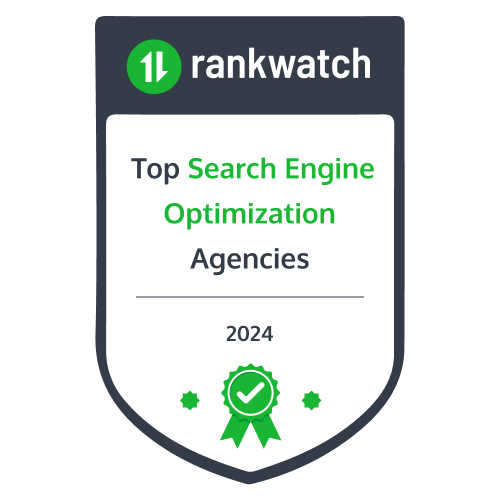Email Deliverability 101: 9 Best Practices for Higher Open Rates
You’ve crafted irresistible offers for your email subscribers.
But if they’re not receiving or clicking those emails, those hours of brainstorming and writing go right down the drain.
So, how do you maximize your email deliverability and open rates?
Start by getting to know your target audience, sharing relevant content they care about, and staying on top of deliverability issues.
Let’s take a closer look.
9 Email Deliverability Best Practices to Boost Your Open Rates
The following are nine ways to improve your email marketing game and engage your subscribers effectively.
1. Segment Your Audience
Interest is among the most important factors affecting open rates and email deliverability. Your subscribers are more likely to open your marketing emails if the content is relevant and interesting.
A key part of ensuring your email content is relevant is segmenting your audience. 39% of marketers who segmented their email lists had higher open rates, lower unsubscribe rates, and better deliverability.
To segment your audience, tailor your emails to where your subscribers are in the buyer’s journey. For example, you can set up certain email triggers based on purchase behavior.
When someone purchases one of your products, you can send them emails about special offers, similar products, and other relevant promotions to enhance their shopping experience and encourage repeat purchases.
On the other hand, if a lead recently signed up for your newsletter, they’ll need different content to engage them. They’re not yet ready to buy. Instead, they’re browsing and looking for information.
So, let’s say they provided their email in exchange for a deliverable like an ebook or a how-to guide. You can send them more emails on that specific topic to educate and engage them.
To get even more specific, you can segment your lists based on demographics, such as location, age, industry, gender, or income.
By targeting your emails to a specific audience, you’re more likely to reach the right people, which can boost your open rates significantly.
So, what’s the secret sauce to segmenting your audience? Enter the customer data platform (CDP).
A composable CDP is a sophisticated tool designed to aggregate and systemize customer data from various sources into one centralized hub.
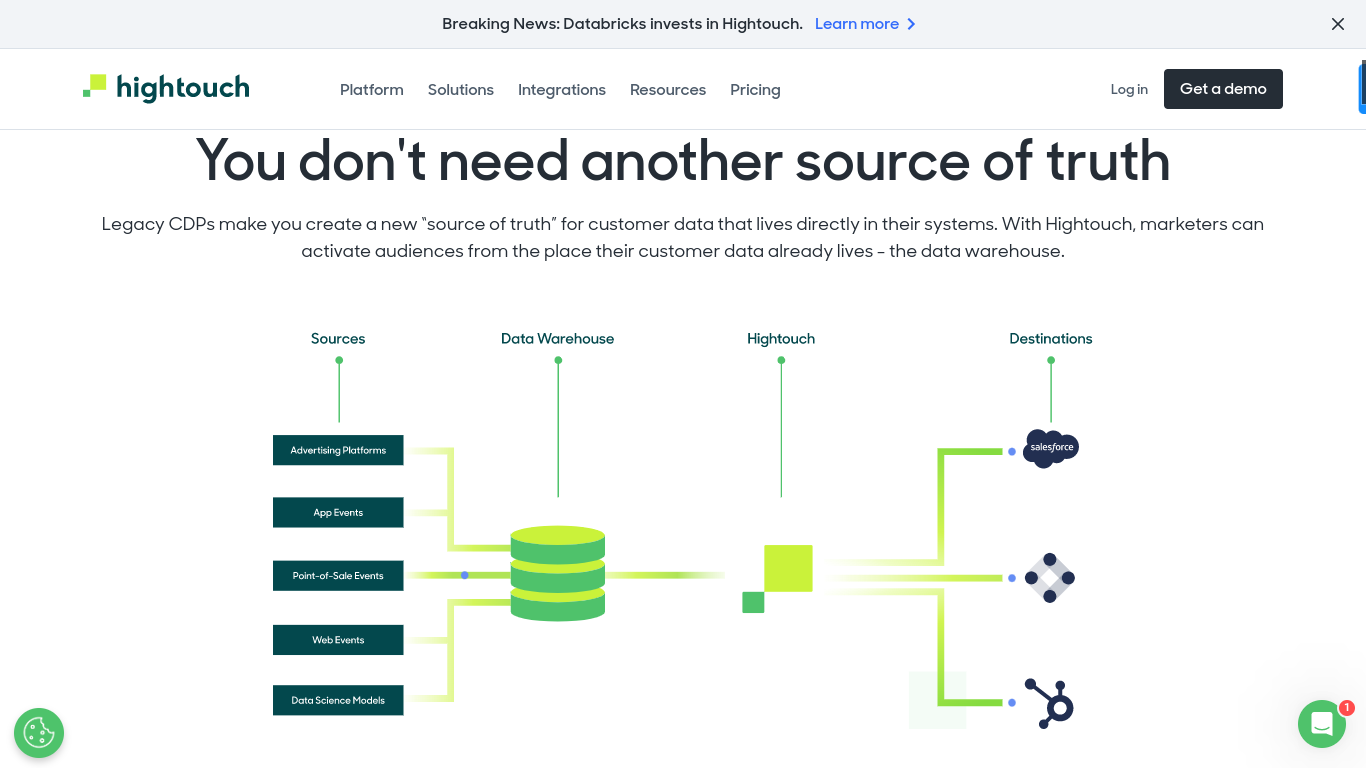
Since a CDP pulls data from various touchpoints (from your website, CRM, POS systems, or even social media), it ensures that you have a full view of your customer’s journey and behavior.
Think of it as a single source of truth. That way, you can provide the most personalized email content that caters to their individual needs and interests.
2. Avoid Spam Filters
It’s easy to assume your emails are getting to your audience. But it’s possible that your emails are going straight to a subscriber’s spam folder.
So, to increase email open rates, you must improve your email deliverability rate. And part of that is avoiding spam filters.
Here are some tips on how to keep your emails out of spam folders:
- Make sure your subscribers have opted-in to receive your emails.
- Don’t send your emails from an IP address with a bad IP reputation (i.e. IP addresses used by people who have sent spam in the past).
- Send through a verified domain.
- Avoid using spam-triggering words and phrases in your subject line like “buy,” “as seen on,” “clearance,” “cheap,” “cash,” or “best price.”‘
- Don’t use deception in your subject lines. Avoid over-sensationalizing, over-promising, or using strange language to stand out in the recipient’s inbox.
- Make it easy for subscribers to opt out of your emails. Place your unsubscribe link where recipients can clearly see it.
3. Get the Timing Right
People tend to check their email at certain times of the day and week. Mornings, from 8am to 10am, often have higher open rates than other times of day. Also, weekdays tend to drive more openings than weekends.
Of course, this may vary by audience, location, industry, or other factors. An effective way to find out the best time to send emails to your specific audience is to segment your list.
Break your subscribers up into two to three equally sized groups. Then, send the same email during different times of the day and week. Try this test a few times with different emails. Keep track of which version gets the most open rates.
4. Generate Curiosity With Subject Lines
Your email subject line is among the first things subscribers will see in their inboxes. So, if your subject line doesn’t draw their attention, subscribers will probably keep scrolling.
Creating a subject line that triggers their curiosity is a great way to get their attention. For example, you could make your subject line a teaser. People love cliffhangers.
Using phrases like “sneak peek” or “big news coming your way” can pique the interest of your subscribers and entice them to read on because you’re hinting that something exciting or important will be revealed in the email.
You can also use a question in your subject line. This strategy gets your subscribers thinking and helps build a personal connection with them.
For example, the subject line, “Want to Unlock Secret Savings? 🤫” doesn’t just ask a question. It also adds an element of mystery and intrigue, luring readers to open the email to discover what exclusive offers or discounts are waiting for them.
K12, an online virtual school, asks a question in this email subject line to get parents thinking about what online private school option works best for their child.
The goal is to get them to click on the email to see the available options.
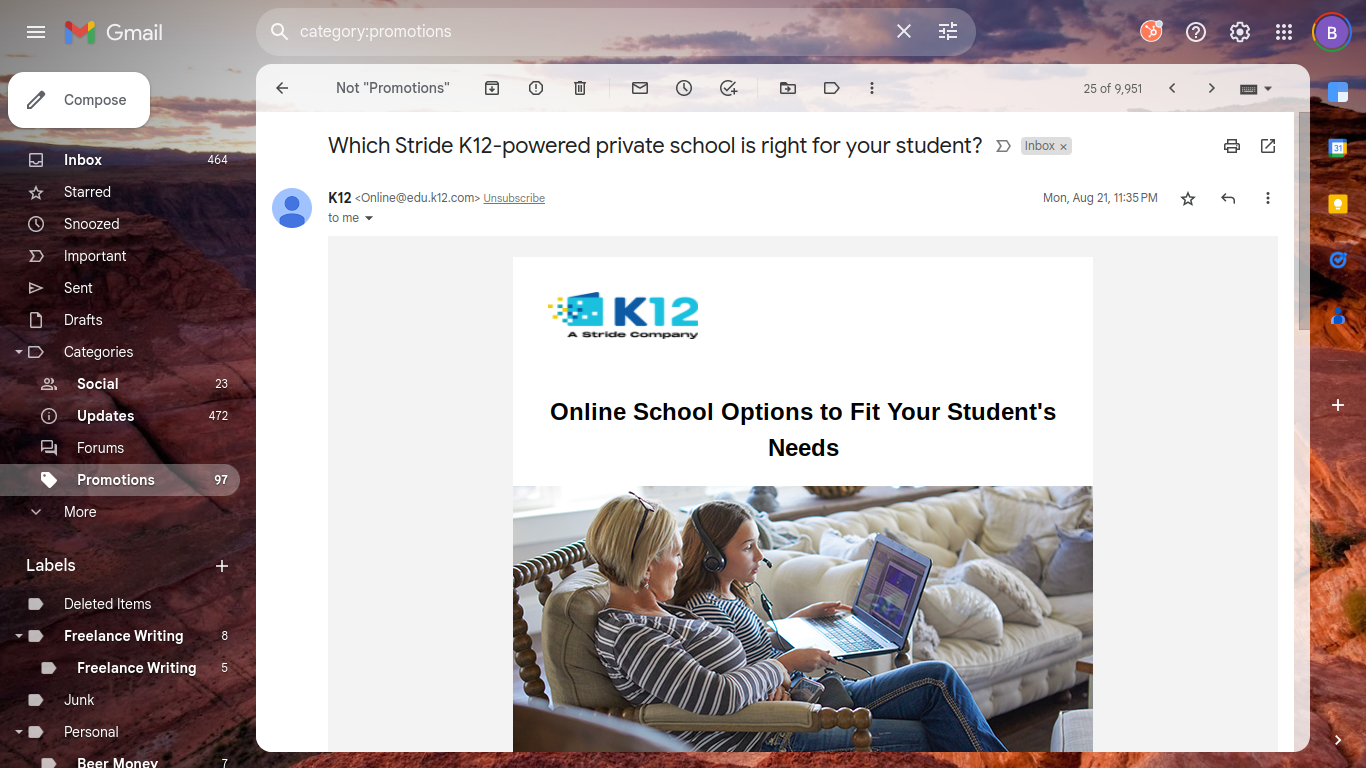
5. Make Sure Your Emails Are Mobile-Friendly
81% of emails are opened and read on a mobile device. When people pick up their phones throughout the day, one of the first things they do is check their email.
So, it’s essential to make your emails mobile-friendly. You only have so much room in email preview text and subject lines, especially on smaller screens.
Long preview text and subject won’t be viewable on mobile devices, as they’ll get cut off. This scenario could make readers lose interest and keep scrolling.
So, make your preview content as short and concise as possible so subscribers know what to expect when they open your email.
Your emails should also have responsive formatting and loadable media that looks attractive and is easy to navigate on mobile devices.
Use a larger font for readability, smaller images to reduce load time, and incorporate large call-to-action (CTA) buttons that are easy to access with a single tap.
It’s also important to keep the formatting simple. A single column is easily scrollable on smaller screens.
For example, Instacart uses a single column to prevent crowding when recipients read it on a mobile device.
The CTA button is also strategically placed so the user doesn’t have to scroll down to see it. The result? Higher click-through rates.
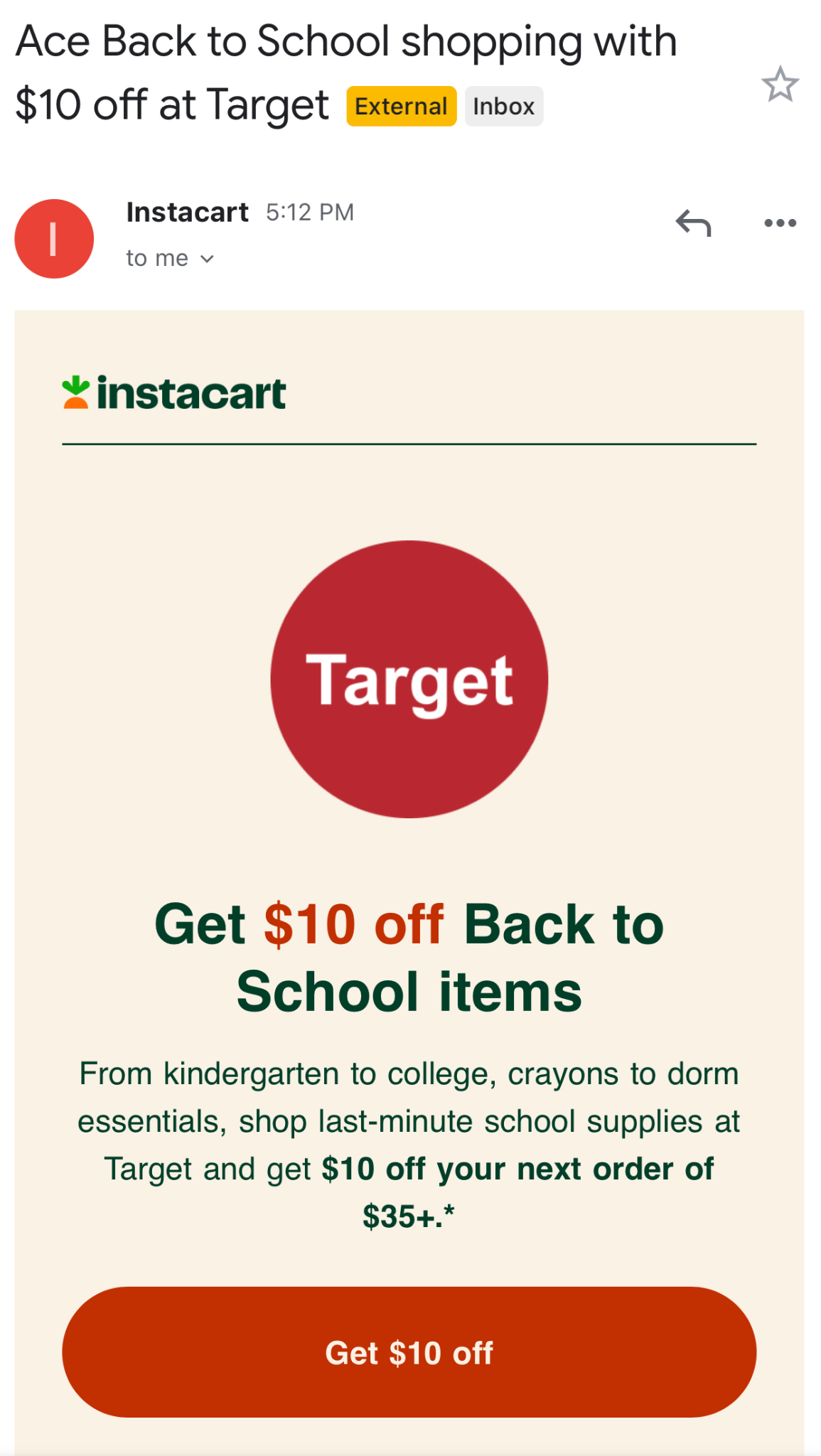
Screenshot by Britney Steele
6. Check Your Email Sender Reputation
If you’re new to email marketing, it’s possible that you aren’t too familiar with the sender score. This nifty score shows your “sender reputation” on a scale of 0 to 100.
It’s based on factors like the quality of your email content, the quality of your contacts (read: email list), and the engagement levels of the emails sent from your IP address.
Unsubscriptions, spam reports (e.g. spam complaints, spam trap hits), industry blacklists, and your domain reputation might also affect your sender score.
Email service providers and/or internet service providers (ISPs) often check your sender score before deciding what to do with your emails.
The lower your sender score, the more difficult it can be for your marketing emails to reach recipients’ inboxes. And this is what affects your email deliverability.
To check your “sender reputation”, go to SenderScore.org.
Click Get Your Score.
Then, type in your IP address and contact information. Click “Let’s go!”.
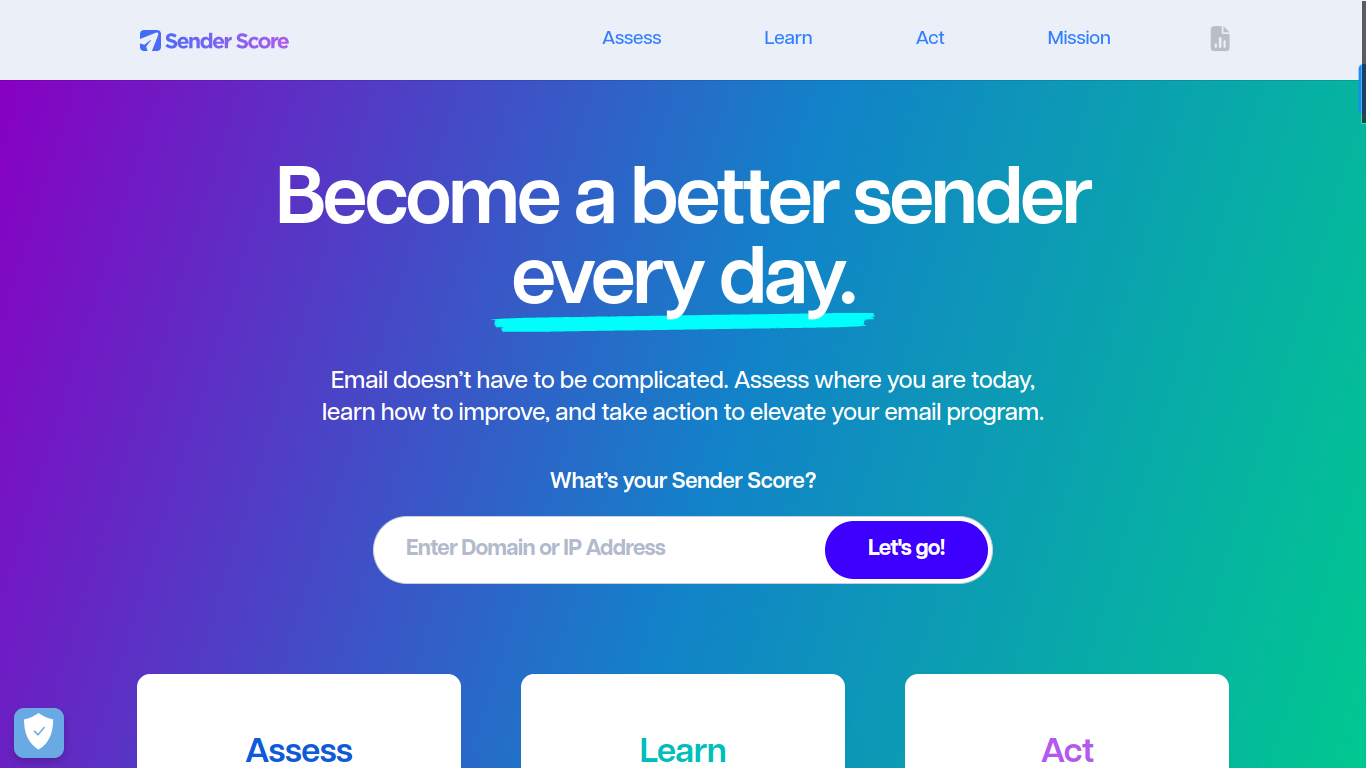
If your score is over 80, you’re in great shape. But if it’s between 70 and 80, it may be time to reevaluate what you could be doing wrong to affect your email deliverability.
And if your score is less than 70, here’s how to improve your sender reputation:
Volume
Are you sending emails at an unsteady rate? Maybe on Monday, you’re sending out 5,000 emails. And on Tuesday, you send 200. Then, after a week of sending no emails, you send another 15,000.
Your sender score could suffer because you’re sending inconsistent volumes of emails.
Frequency
How often are you sending emails to your subscribers’ inboxes? Keep it consistent and on a regular schedule. If you email every week, then email every week.
Don’t go away for a month and then suddenly pick back up with emails. The more consistent you are with email frequency, the higher your sender score.
IP address
Have you warmed up your IP address? After setting up a dedicated IP address, send small email batches to your most engaged recipients.
These people are less likely to mark you as spam or unsubscribe. Then, gradually increase the number of people you email over time.
Blacklist
Make sure your IP address or email domain name isn’t blacklisted. Because if you’re on a blacklist, email servers will consider your emails spam.
There are hundreds of blacklists out there. So, to check if your email falls on a blacklist, try a service like MXToolBox.
If you find yourself flagged as a blacklist, ask that the provider remove your IP address. In some cases, they’ll remove you right away.
Otherwise, you might have to do a few things to prove that you’re a trustworthy sender. For example, you might have to undergo email authentication methods.
Spam traps
Avoid spam traps – emails ISPs and blacklist operators use to identify and monitor spam emails.
If one of your emails falls into a spam trap, it can negatively affect your sender’s reputation. To keep your emails from getting caught in spam traps, set up double-opt-in subscription forms, verify your mailing list, and clean up mailing lists regularly.
7. Regularly Refresh Your Email List
Email subscribers often lose interest. It could also be something as simple as if they’ve recently changed email accounts. Or, maybe they experienced a significant life change, like moving to a different location, and they may no longer need your product or service.
Location is a huge factor for email marketing in certain industries. Take real estate, for example. A potential home buyer or seller may be looking to buy or list a home in a specific area.
So, they find a local real estate agency and sign up for a location-specific newsletter. However, if the potential client no longer wants to buy or sell a home in that area, the emails they receive may no longer be relevant to their location.
And you want to maximize your number of subscribers in this industry, as the average real estate lead conversion rate using email is around 3.5%. So, the accuracy of the real estate leads on your email list can make or break your email campaigns.
For example, suppose someone sees this email about ocean-view homes in Kaneohe, HI, but has since moved back to the mainland. In that case, they’re most likely going to:
- Immediately delete the email
- Open it and unsubscribe
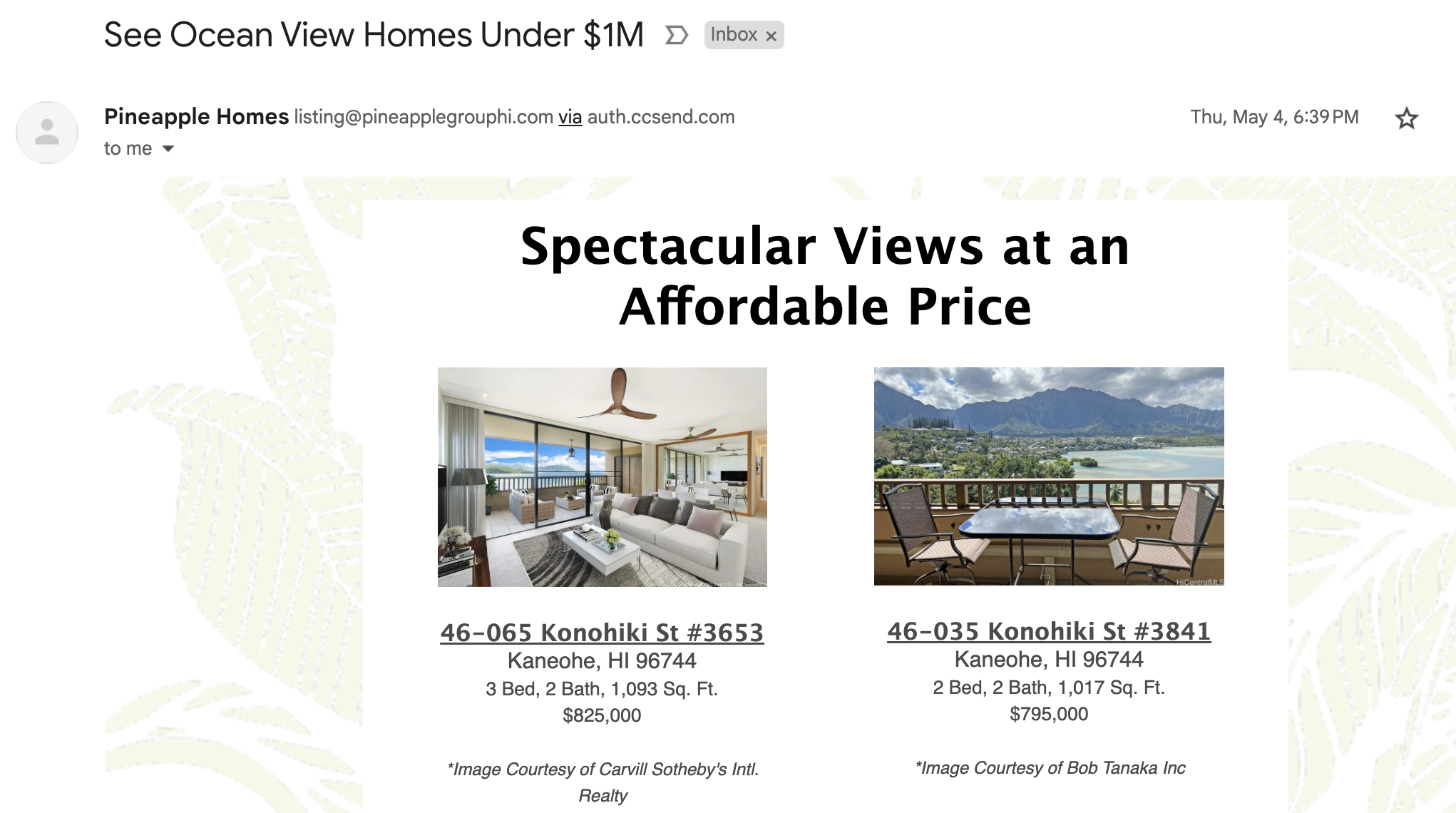
Screenshot by Britney Steele
Both of those actions can negatively impact your campaigns. To prevent this, propose the listings as an investment property or vacation home rather than a primary residence.
No matter your industry, you should fine-tune your email list to reflect your niche market’s unique needs, geographic preferences, and property interests. This extra effort results in higher engagement and, ultimately, higher open rates.
8. Remove or Re-Engage Inactive Subscribers
Similarly, interests and circumstances change when it comes to newsletters. It’s crucial for email marketers to maintain list hygiene and keep their newsletter lists as fresh as possible.
Removing inactive subscribers can help you tenfold. For example, if a subscriber hasn’t engaged with your emails in the past six months, it might be time to remove them from your list.
But before you do, you can try to win back inactive users with a last-ditch effort email. Freedom National, an auto insurance provider, is trying to win back an inactive customer with a special offer.
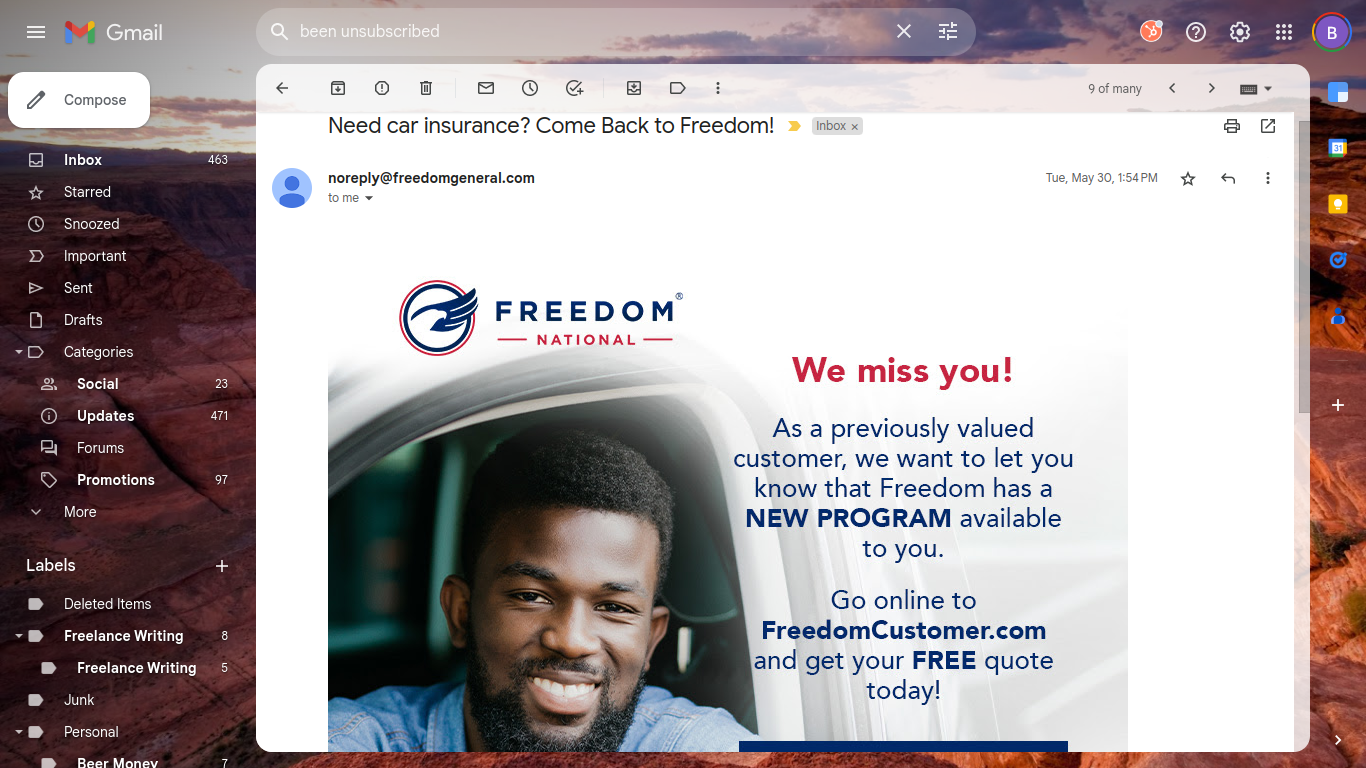
Screenshot by Britney Steele
In addition to win-back email, you can simply ask subscribers if they still want to receive updates or promotions. Keep the ones who respond. If you hear crickets from others, you can remove those subscribers from your email list.
9. A/B Test Everything
Another thing you can do to improve your email deliverability is A/B test your emails. With this method, you don’t have to guess what subject lines, preheader text, CTAs, emojis, or images will perform the best.
A/B testing allows you to test two different versions of your email and compare their performance based on open and conversion rates.
You’re sending the same email, except you’re tweaking one element, such as the subject line, preheader text, CTA, emojis, or imagery.
If one email gets more opens and clicks than the other, that’s your winner. That version is the one you’ll send to all your subscribers.
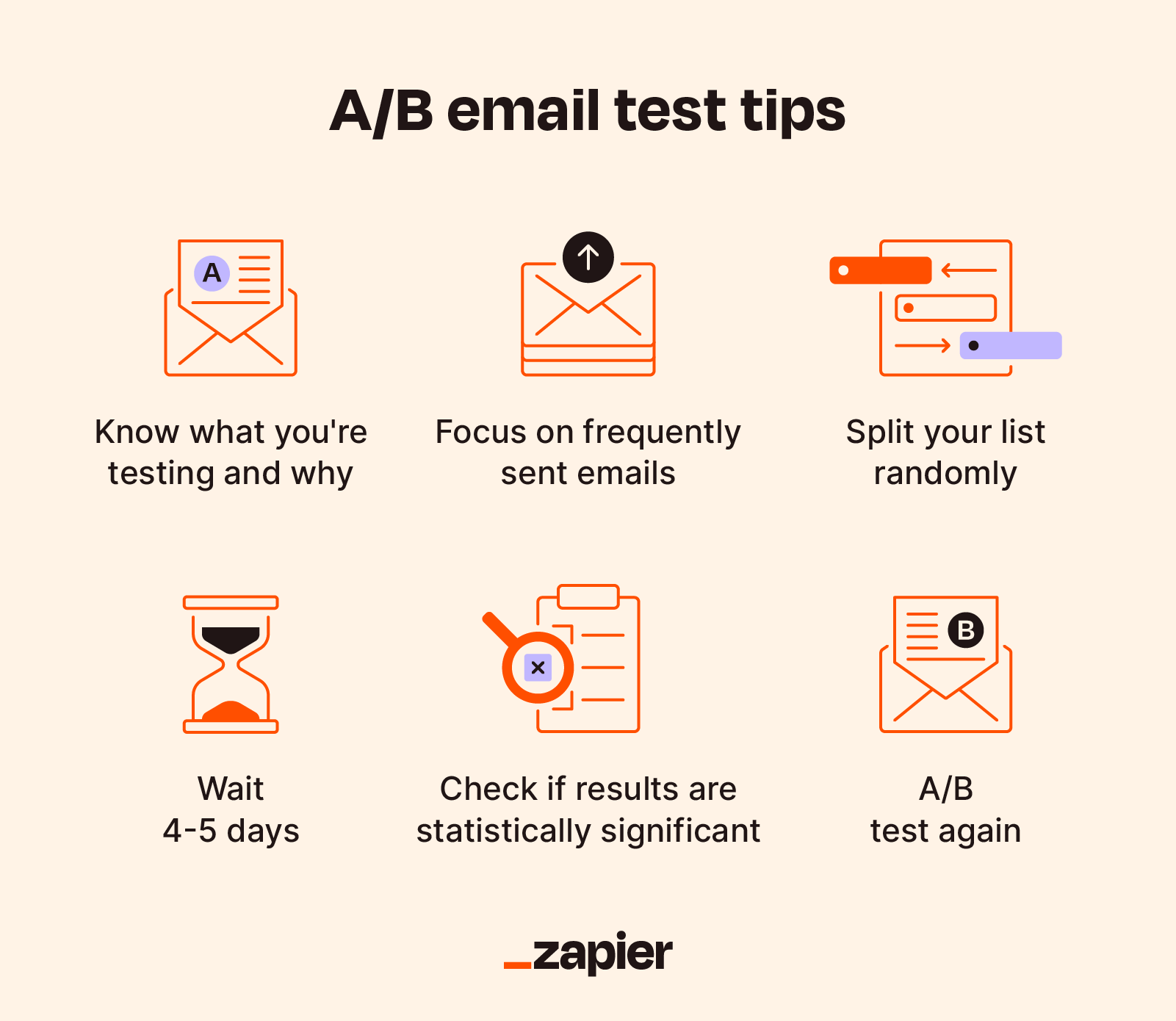
Which metric you choose to focus on will determine the element in your email to change. For example, if it’s the open rate, you’ll focus on tweaking the elements subscribers see before clicking the email, like your subject line or preheader text.
But if you want to test the two different product images within the body of your email, you’ll want to look at click-through rates (CTR) and conversions.
Follow These Email Deliverability Best Practices to Increase Engagement
The best email marketers are always looking to improve email delivery rates so that their emails get in front of as many people as possible. But it doesn’t stop there. Just because an email was delivered doesn’t mean a subscriber has seen it.
The next step is to work on your open rates so that when your audience comes across one of your emails, they’ll feel like they’ll miss out if they don’t click through.
If you send relevant emails to your subscribers, perfect your timing and pique curiosity, you’re well on your way to a winning email campaign that converts leads into paying customers.
Author bio

Born and raised in Atlanta, Britney is a freelance writer with 5+ years of experience. She has written for a variety of industries, including marketing, technology, business, finance, healthcare, wellness, and fitness. If she’s not spending her time chasing after three little humans and two four-legged friends, you can almost always find her glued to a book or awesome TV series.




